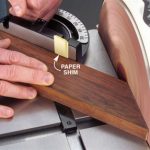We may receive a commission when you use our affiliate links. However, this does not impact our recommendations.
Silicon Carbide (SiC)
Silicon carbide (SiC) occurs naturally but rarely in the clear crystals known as moissanite that are sometimes passed off as diamonds to unsuspecting jewelry buyers. In 1893, Edward Goodrich Acheson (1856–1931) invented and patented a method for manufacturing silicon carbide. The story has it that Mr. Acheson’s attempt to create a new compound by dissolving carbon in molten aluminum oxide produced sparkly black crystals that he called Carborundum – “carbon + corundum” – assuming he had succeeded. He hadn’t. But he did make silicon carbide. His process led to large-scale production of SiC for abrasives.
Silicon carbide is also used in semiconductor applications, astronomical mirrors and extreme-heat structural applications.

Silicon Carbide, SiC. Image courtesy Ben Mills
SiC is the abrasive applied to the ubiquitous, black, wet-or-dry sandpaper as well as sharpening stones, including the Crystolon brand. Our interest in SiC concerns its hardness and the sharpness of its crystals. SiC grains are very sharp and hard with a Mohs hardness of 9 to 9.5 (Knoop hardness of 2480) but are very friable. This fragility is both good and bad: good because as the grains break down under grinding pressure, they expose new, sharp points. Bad because, with hard steel, they break down too easily and stop cutting too soon. SiC is not recommended for wood, either, as wood is not hard enough to crush the SiC grains. If you use SiC on wood, it tends to load up and quit cutting before it gets dull (hence, the wet-or-dry feature; wet sanding helps to avoid the loading and clogging problem when sanding soft surfaces, such as wood, or paint – the automotive paint industry is the largest consumer of wet-or-dry sandpaper.)
![]()
15 micron Silicon Carbide grains at 1000x magnification.
Loose silicon carbide grains can come in handy for lapping sharpening stones when used on a surface such as cast iron, copper or plastic, that is softer than that which you are lapping. A soft surface allows the grains to embed in it, immobilizing them while grinding the stone flat.
SiC grinding wheels are used for soft metals like brass and aluminum; the abrasive particles are sharp enough to cut softer metals. And, due to both its sharpness and hardness, SiC is used in specially formulated grinding wheels for grinding carbide.
Here are some supplies and tools we find essential in our everyday work around the shop. We may receive a commission from sales referred by our links; however, we have carefully selected these products for their usefulness and quality.








